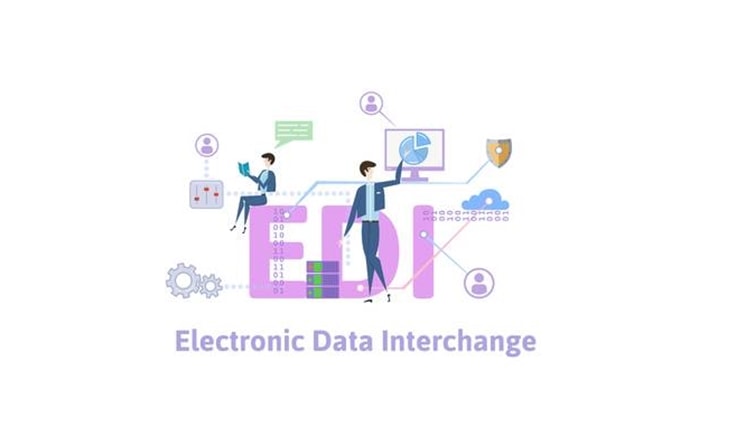The supply chain and EDI have both been portrayed as the backbone of logistics
Present-day question isn’t really “Is your company using EDI?” Here’s the real question: Is your organization EDI Capable of present-day business requests?
Indeed, there may be a handful of companies not taking advantage of EDI solutions or that have regrettably misrepresented, un-contextualized API potential, but unless you’re a fledgling organization, the issue mostly lies with modernization or an upgrade of some sort in om EDI Design capabilities. With so many frameworks and technological innovation across the swift digital landscape, many businesses are discovering their current EDI solutions aren’t keeping up.
And for any organization that has just commenced doing EDI or is thinking it to meet a trading partner requisites, EDI can seem to be a strong battle to meet the required B2B transaction protocols, document types, communication mediums, security mandates, and various other prospective.
EDI capability is no doubt difficult. But below is everything a company points are everything that a company needs to look at it.
What Is EDI Capable?
In the least difficult terms, being EDI capable is the company’s capacity to go up and implement an EDI solution for streamlined business communications with accomplices, merchants, providers, and different clients. While the expression “EDI capable” may be direct, there are numerous business influencers who don’t realize what it takes to oblige and use this essential logistics innovation.
Step by step instructions to Become EDI Capable
EDI’s fundamental objective in life is to make everything about business and logistics work easier and less demanding through institutionalization, robotization, integration, and keeping basic critical data exchanges simple. But as its is known that Amazon EDI implementation takes specialized expertise and integration with other business processes.
Did you notice getting to be EDI capable is not that easy? It may all appear to be overwhelming, however, there is a silver coating and long term guaranteed result.
Perks of Becoming an EDI Capable Enterprise
For any type of businesses, large or small, can reap the perks of EDI. Besides offering a standardized format of communication for common business document transactions such as (purchase orders (EDI 850), functional acknowledgments (EDI 997), inventory inquiry (EDI 849) and much more set of communication protocol can be used and that can streamline business workflows and onboard partners swiftly, we know EDI solutions have the technology to deliver in five vital ways: Reduce Investments, speed, precision, productivity, and security.
Reduce Investments
Expanding the value of supply chain operations through real-time data insights lead to workflows that are predictable and controllable, both of which diminish client costs. Then there are the extra savings on investments that come along with paper and its maintenance (printing, reproduction, storage, postage and much more). All those physical expenses are enormously reduced or diminished with EDI solution, finally reducing it to 35%. And with streamlined guidelines, keeping up with EDI standards helps avoid fines due to SLAs, extreme delay in the payments, and execution gaps.
Speed
Automation through EDI solution accelerates all aspects of the business cycle. Complete adoption of EDI that led to hands-free order processing was shown to cut the order-to-shipment cycle almost half time. In the first place, it reduces the human error which majorly contributes to the delay in the timeline. And this almost goes without saying, but there’s an enormous difference in transactions being exchanged in a manner of minutes rather than days or even weeks if there’s a dependency on postal service or other means of moderate transfer.
Accuracy
Physically rekeying information into ERP and request frameworks is inclined to mistake, and computerization takes out that issue and produces a 40% decrease in blunders. EDI solutions additionally incorporate with ERP frameworks to guarantee transferable and open information is precise and desires are met with every exchange. As specified above, precision directly affects an organization’s primary concern with limited chargebacks, deferred shipments, and erroneous item costs.
Efficiency
This is the place where quick and precise EDI process consolidates to convey genuine integration and automation. Diminished hands-on processing implies lessened manual data entry, fewer blunders, and enhanced client connections, which can prompt delivery of goods and decreased client turnover. Automated data exchanges among applications over the whole inventory network ensure B2B critical documents and shipments are conveyed in a timely way with continuous tracking visibility.
Security
EDI solutions are intended to guarantee security with strict access to authorized clients and equipped with real-time tracking. Data is shared safely across a wide variety of communications protocols and security benchmarks, complying with mandates in worldwide business today. And that guarantees transparency between business partners with electronic approvals and receipts.
Conclusion
Considering all the above things, EDI is difficult to stay away from. For any business that depends on any part of the supply chain network, EDI has become a vital part of logistics. EDI is a technology that can be conveyed to facilitate connectivity and integration across extremely complex business frameworks. Consider the impact of being able to consistently lead business digitally even with multi-cloud and different types of integration requirements. So, if a company isn’t EDI capable, the brutal truth is that it won’t be business capable either. Once an enterprise is successfully implementing or modernizes its EDI capabilities for streamlined workflows, it will become more robust, more scalable, more productive, more transparent, and simple to do business with.

